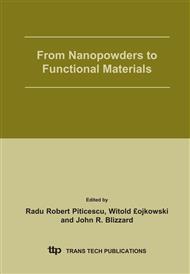p.75
p.79
p.83
p.87
p.93
p.103
p.109
p.117
p.123
Potential of Nano-Sized Rare Earth Fluorides in Optical Applications
Abstract:
Rare earth fluorides are a class of materials with a high potential for optical applications. Fluoride lattices allow high coordination numbers for the hosted rare earth ions, but the high ionicity of the rare earth to fluorine bond leads to a wide band gap and very low vibrational energies. These two essential factors, in particular, contribute to their practicality for use in optical applications based on vacuum ultraviolet (VUV) and near infrared (NIR) excitation. The preparation and optical characteristics of rare earth fluoride nanoparticles and their embedding in polymeric, glassy or porous matrices are very promising for the eventual manufacture of transparent hybrid materials. Recent attempts to control the size of these particles down to the nano-scale and, at the same time, maintaining the performance of their macroscopic counterparts, indicate accessibility of hitherto unrealized optical properties and applications.
Info:
Periodical:
Pages:
93-102
Citation:
Online since:
September 2005
Authors:
Price:
Сopyright:
© 2005 Trans Tech Publications Ltd. All Rights Reserved
Share:
Citation:


